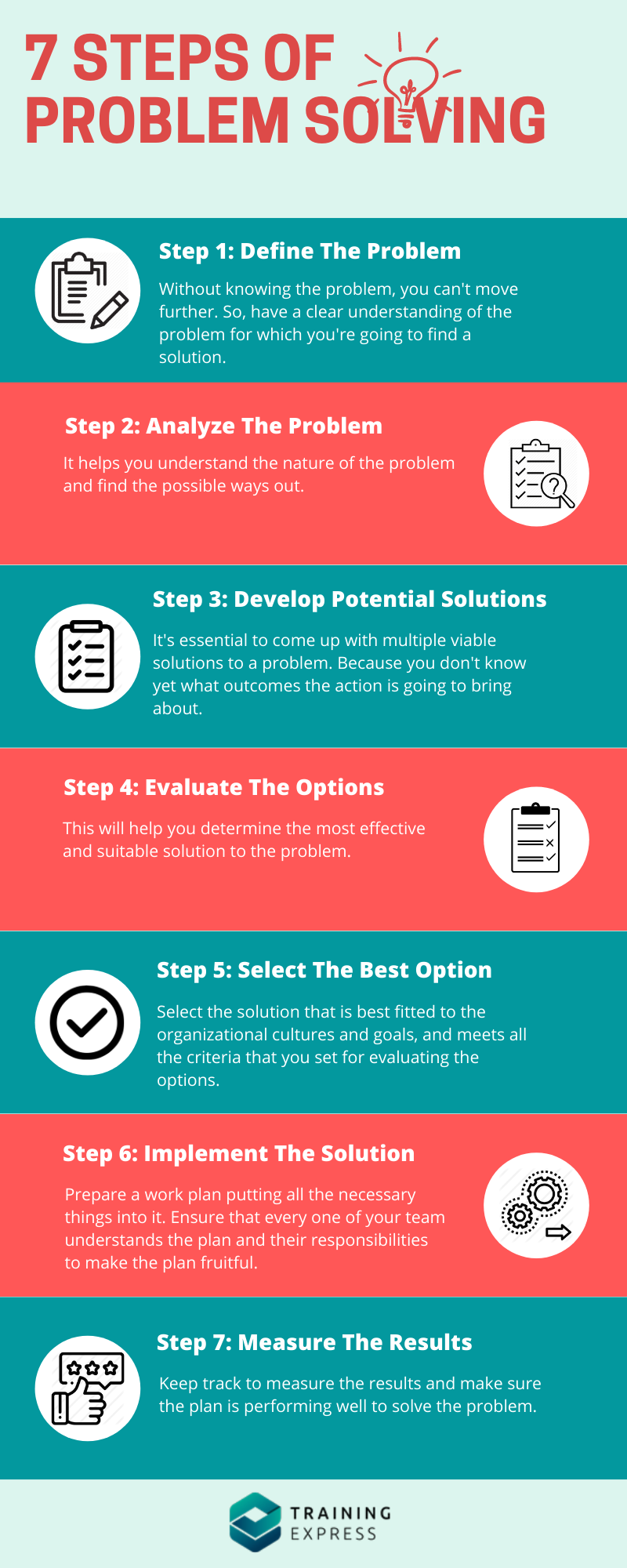The Hows and Whys of Problem Solving
Problem-solving is an indispensable professional skill for a multitude of compelling reasons that contribute significantly to both individual career success and overall organizational effectiveness. Here's a breakdown of its importance:
Driving Efficiency and Productivity
Identifying Root Causes: Problem solvers don't just address symptoms; they dig deeper to understand the underlying causes of issues. This targeted approach leads to more effective and lasting solutions, preventing recurrence and saving time and resources in the long run.
Streamlining Processes: By identifying inefficiencies and bottlenecks, individuals with strong problem-solving skills can devise and implement solutions that optimize workflows, leading to increased productivity and smoother operations.
Effective Decision-Making: Problem-solving often involves evaluating various options and choosing the best course of action. Strong problem solvers are adept at analyzing pros and cons, assessing risks, and making informed decisions that contribute to positive outcomes.
Fostering Innovation and Creativity
Thinking Outside the Box: Problem-solving encourages individuals to explore novel approaches and challenge conventional thinking. This can lead to the development of innovative solutions and the identification of new opportunities.
Adapting to Change: The professional landscape is constantly evolving. Individuals who can effectively solve new and unexpected problems are better equipped to adapt to change, navigate uncertainty, and thrive in dynamic environments.
Enhancing Collaboration and Teamwork
Facilitating Communication: Problem-solving often requires clear and effective communication to understand the issue, brainstorm solutions, and implement them collaboratively. Strong problem solvers can articulate their ideas clearly and actively listen to the perspectives of others.
Resolving Conflicts: Disagreements and conflicts are inevitable in any workplace. Individuals with good problem-solving skills can approach these situations objectively, identify common ground, and facilitate constructive dialogue to reach mutually acceptable solutions.
Building Stronger Relationships: When individuals work together to solve problems effectively, it fosters trust, strengthens bonds, and improves overall team cohesion.
Boosting Professional Growth and Value
Demonstrating Initiative: Proactively identifying and solving problems showcases an individual's initiative, critical thinking, and commitment to contributing to the organization's success.
Increasing Employability: Employers highly value individuals who can demonstrate strong problem-solving abilities, as these skills are transferable across various roles and industries. Highlighting problem-solving skills on a resume and during interviews can significantly enhance a candidate's appeal.
Facilitating Leadership: Effective leaders are often excellent problem solvers. They can analyze complex situations, make strategic decisions, and guide their teams toward successful outcomes. Developing problem-solving skills is a crucial step in leadership development.
Building Confidence and Resilience: Successfully tackling challenges builds confidence and resilience. Each solved problem reinforces an individual's ability to overcome future obstacles, fostering a proactive and solution-oriented mindset.
In essence, problem-solving is not just about fixing things when they go wrong; it's a fundamental skill that empowers professionals to be proactive, innovative, collaborative, and ultimately more successful in their careers while driving positive change within their organizations.
Take Some Time for Reflection: Think about a problem you have recently faced. How did you solve it? Would taking more time to understand the problem from multiple perspectives have made your decision making easier or more difficult? How likely is it that you will face a similar problem in the future? Will you make the same decision, or has your experience changed your perspective?
Practice Scenario:
You are a new Junior Engineer at "Innovative Structures Inc." Your current project involves designing a cost-effective and sustainable support system for a new solar panel array being installed on the roof of a large commercial building. During the initial structural analysis, you discover that the existing roof structure, while generally sound, has a few unexpected weak points that were not accounted for in the initial building plans. Reinforcing these weak points using traditional methods would significantly increase the project cost and potentially delay the installation timeline.
Which of the following approaches demonstrates the strongest understanding of creative problem-solving in this situation?
Option A: Immediately halt the project and inform your senior engineer that the project cannot proceed as planned due to structural deficiencies. Request instructions on how to revise the project scope and budget.
Option B: Focus on researching and implementing standard, well-established reinforcement techniques for the identified weak points, even if it means exceeding the initial budget and timeline. Document the increased costs and potential delays for the project manager.
Option C: Brainstorm alternative and unconventional solutions that could address the weak points without significant structural modifications or cost increases. This might involve exploring different load distribution methods, utilizing lightweight but strong materials in innovative ways, or re-evaluating the placement of the solar panels to minimize stress on the vulnerable areas.
Option D: Consult with other junior engineers to see if they have encountered similar issues on past projects and follow their advice, even if the solutions don't directly address the specific constraints of this project.
Responses and Rationale
-
Incorrect: While responsible communication is important, immediately halting the project without exploring solutions doesn't demonstrate problem-solving.
-
Incorrect: This focuses on standard solutions without considering the constraints of cost and timeline, missing an opportunity for creative alternatives.
-
Correct! Option C directly addresses creative problem-solving. It emphasizes:
Thinking outside the box: Exploring "alternative and unconventional solutions."
Considering constraints: Aiming for solutions that are "cost-effective" and avoid "significant structural modifications or cost increases."
Exploring different angles: Suggesting various creative approaches like load distribution, material innovation, and even re-evaluating the initial design parameters.
-
Incorrect: Relying solely on past, potentially unrelated advice from peers doesn't demonstrate independent creative thinking or a thorough analysis of the current problem.
